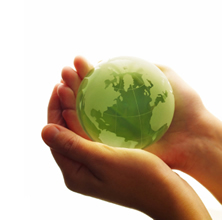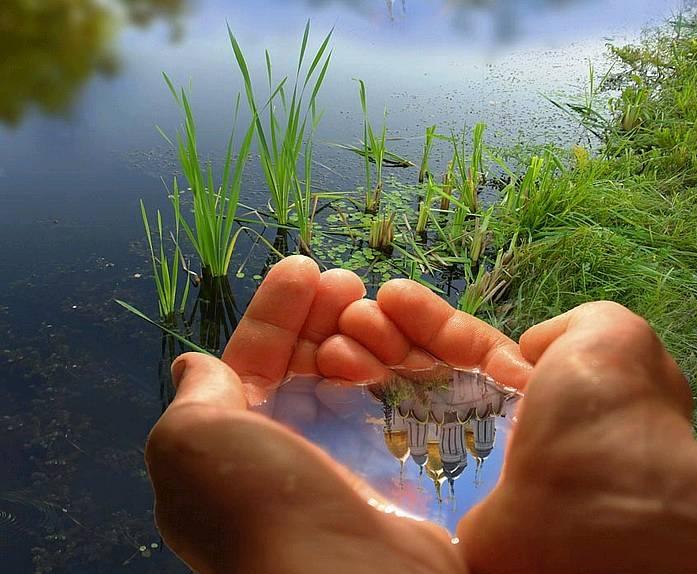Water pollution is an undesirable change in the state of water, contaminated with harmful substances. It is the second most important environmental issue next toair pollution. Any change in the physical, chemical and biological properties of water that has a harmful effect on living things is water pollution. Water pollution effects all the major water bodies of the world such as lakes, rivers, oceans and groundwater. Polluted water is unfit for drinking and for other consumption processes. It is also not suitable for agricultural and industrial use. The effects of water pollution are harmful to human beings, plants, animals, fish and birds. Polluted water also contains viruses, bacteria, intestinal parasites and other harmful microorganisms, which can cause waterborne diseases such as diarrhea, dysentery, and typhoid. Due to water pollution, the entire ecosystem gets disturbed.
Sources of water pollution
The important sources of water pollution are domestic wastes, industrial effluents and agricultural wastes. Other sources include oil spills, atmospheric deposition, marine dumping, radioactive waste, global warming and eutrophication. Among these, domestic waste (domestic sewage) and industrial waste are the most important sources contributing to water pollution.
Domestic Sewage: Domestic sewage is wastewater generated from the household activities. It contains organic and inorganic materials such as phosphates and nitrates. Organic materials are food and vegetable waste, whereas inorganic materials come from soaps and detergents. Usually people dump the household wastes in the nearby water source, which leads to water pollution. The amount of organic wastes that can be degraded by the water bodies is measured in terms of Biological Oxygen Demand (BOD). BOD is the amount of oxygen needed by microorganisms to decompose the organic waste present in the sewage. The higher the amount of BOD, the more water is polluted with organic waste. Many people are not aware of the fact that soaps and detergents enrich the water bodies with phosphates. These phosphates often lead to algal bloom and eutrophication, which is is most common in stagnant water bodies such as ponds and lakes. Algal bloom and eutrophication lead to the suffocation of fish and other organism in a water body.
Industrial Effluents:Wastewater from the manufacturing and processing industries causes water pollution. The industrial effluents contain organic pollutants and other toxic chemicals. Some of the pollutants from industrial source include lead, mercury, asbestos, nitrates, phosphates, oils, etc. Wastewater from food and chemical processing industries contribute more to water pollution than the other industries such as distilleries, leather processing industries and thermal power plants. Also dye industries generate wastewater which changes the water quality especially water color. Since the water color is changed, there is alteration in the light penetration and hence it disturbs the aquatic plants and animals. Many of the big industries have come up with wastewater treatment plants. However, it is not the case with small-scale industries. It is very difficult to treat wastewater from the industries.
Sources of water pollution
The important sources of water pollution are domestic wastes, industrial effluents and agricultural wastes. Other sources include oil spills, atmospheric deposition, marine dumping, radioactive waste, global warming and eutrophication. Among these, domestic waste (domestic sewage) and industrial waste are the most important sources contributing to water pollution.
Domestic Sewage: Domestic sewage is wastewater generated from the household activities. It contains organic and inorganic materials such as phosphates and nitrates. Organic materials are food and vegetable waste, whereas inorganic materials come from soaps and detergents. Usually people dump the household wastes in the nearby water source, which leads to water pollution. The amount of organic wastes that can be degraded by the water bodies is measured in terms of Biological Oxygen Demand (BOD). BOD is the amount of oxygen needed by microorganisms to decompose the organic waste present in the sewage. The higher the amount of BOD, the more water is polluted with organic waste. Many people are not aware of the fact that soaps and detergents enrich the water bodies with phosphates. These phosphates often lead to algal bloom and eutrophication, which is is most common in stagnant water bodies such as ponds and lakes. Algal bloom and eutrophication lead to the suffocation of fish and other organism in a water body.
Industrial Effluents:Wastewater from the manufacturing and processing industries causes water pollution. The industrial effluents contain organic pollutants and other toxic chemicals. Some of the pollutants from industrial source include lead, mercury, asbestos, nitrates, phosphates, oils, etc. Wastewater from food and chemical processing industries contribute more to water pollution than the other industries such as distilleries, leather processing industries and thermal power plants. Also dye industries generate wastewater which changes the water quality especially water color. Since the water color is changed, there is alteration in the light penetration and hence it disturbs the aquatic plants and animals. Many of the big industries have come up with wastewater treatment plants. However, it is not the case with small-scale industries. It is very difficult to treat wastewater from the industries.
Let’s take the example of Minamata disease in which more than 1,784 people died and many more suffered due to consumption of fish, bioaccumulated with methyl mercury. It was caused by release of methyl mercury from Chisso Corporation’s chemical factory. The disease continued to affect animals and humans for over 30 years, from 1932 to 1968.
Agricultural Waste: Agricultural waste include manure, slurries and runoffs. Most of the agricultural farms use chemical fertilizers and pesticides. The runoffs from these agricultural fields cause water pollution to the nearby water sources such as rivers, streams and lakes. The seepage of fertilizers and pesticides causes groundwater pollution, which is commonly known as leaching. Although the quantity of agricultural waste is low, the effects are highly significant. It causes nutrient and organic pollution to both water and soil. Nutrient pollution causes an increase in the nitrates and phosphates in the water bodies, which leads to eutrophication.
Depending upon the origin, sources of water pollution are classified as point source and non-point source and ground-water pollution. Point source pollution discharges the harmful waste directly into water bodies, for example, disposal through wastewater treatment plants. On the other hand, non-point source pollution delivers indirectly through other ways, for example, water pollution from acid rain.
How is Water Pollution Caused?
Although certain natural processes may cause some of the water pollution, however, human activity is the largest cause of our seas, rivers and lakes getting polluted. We need to use water everyday both in our industries as well as our homes. We get this water from groundwater sources, rivers, and lakes, and after using it, and often contaminating it, most of this water gets back into the rivers, lakes, and oceans.
The used water from agricultural and industrial practices, and household use create wastewater, also referred to as sewage. If this is allowed to flow back into water systems without being treated, it causes pollution, which results in harming both humans as well as animal life. Water also gets polluted when there is a runoff of rainwater from industrial, agricultural, and urban areas, which flow directly through stormwater drains into water systems without any treatment.
The disposal of sewage is a major problem in developing countries where there isn’t adequate sanitation in large areas, thus carrying disease causing bacteria and viruses into sources of water. In countries that are developed, people often flush pharmaceutical and chemical products into their toilet.
Some of the other causes of pollution are oil spillages and dumping in oceans, dumping litter into streams, rivers, and oceans such as cardboard, newspaper, foam, Styrofoam, plastic packaging, aluminum, glass, and so on. Some of these take a very long time to degrade, e.g., plastic packaging can take 400 years, Styrofoam takes 80 years, foam takes 50 years, and aluminum takes 200 years.
Nuclear waste, atmospheric deposition, and underground storage leakages are some of the other causes of water pollution.
What are the Ways to Prevent Water Pollution?
While we need to see to it that the government is stringent about seeing to it that there are adequate treatment plants to treat sewage, and seeing to it that industries have treatment plants and nuclear plants have proper waste storage systems for radioactive material, and so on, there are many things that we can do individually to prevent water pollution. Given below are a few ways to prevent water pollution:
Although certain natural processes may cause some of the water pollution, however, human activity is the largest cause of our seas, rivers and lakes getting polluted. We need to use water everyday both in our industries as well as our homes. We get this water from groundwater sources, rivers, and lakes, and after using it, and often contaminating it, most of this water gets back into the rivers, lakes, and oceans.
The used water from agricultural and industrial practices, and household use create wastewater, also referred to as sewage. If this is allowed to flow back into water systems without being treated, it causes pollution, which results in harming both humans as well as animal life. Water also gets polluted when there is a runoff of rainwater from industrial, agricultural, and urban areas, which flow directly through stormwater drains into water systems without any treatment.
The disposal of sewage is a major problem in developing countries where there isn’t adequate sanitation in large areas, thus carrying disease causing bacteria and viruses into sources of water. In countries that are developed, people often flush pharmaceutical and chemical products into their toilet.
Some of the other causes of pollution are oil spillages and dumping in oceans, dumping litter into streams, rivers, and oceans such as cardboard, newspaper, foam, Styrofoam, plastic packaging, aluminum, glass, and so on. Some of these take a very long time to degrade, e.g., plastic packaging can take 400 years, Styrofoam takes 80 years, foam takes 50 years, and aluminum takes 200 years.
Nuclear waste, atmospheric deposition, and underground storage leakages are some of the other causes of water pollution.
What are the Ways to Prevent Water Pollution?
While we need to see to it that the government is stringent about seeing to it that there are adequate treatment plants to treat sewage, and seeing to it that industries have treatment plants and nuclear plants have proper waste storage systems for radioactive material, and so on, there are many things that we can do individually to prevent water pollution. Given below are a few ways to prevent water pollution:
- Toxic products like paints, automobile oil, polishes, and cleaning products should be stored and disposed off properly. As a matter of fact, it is better to use non-toxic, products for the house as far as possible. Also, never dispose off such products by throwing them into your toilet or sink.
- Dispose off your trash in a proper manner and try and incorporate the recycling habit as far as possible. Non-degradable products like tampons, sanitary napkins, and diapers should not be flushed down the toilet, for these can end up damaging the process of sewage treatment, and usually end up as litter on beaches.
- Refrain from throwing litter into streams, lakes, rivers, or seas. If you do spot litter on beaches or in water systems, after ascertaining that it is safe, collect them and dispose off them in any nearby waste disposal system.
- Try using environmentally friendly household products like toiletries, soap-based household cleaning material, and washing powder as far as possible.
- Try using natural fertilizers and pesticides as far as possible, or if not, do not overuse them or over-water gardens and lawns. This will help in reducing the pollutants that get into water systems due to runoffs.
- Automobile oil should be re-used as far as possible. Also, it is important to keep your automobile well maintained in order to prevent leakages of toxic fluids like antifreeze and oil.
- Also, actively conserve water by turning the tap off when you do not need running water, such as while brushing teeth. Apart from preventing water shortages, it lessens the amount of water that needs to be treated.


































0 comments:
Post a Comment